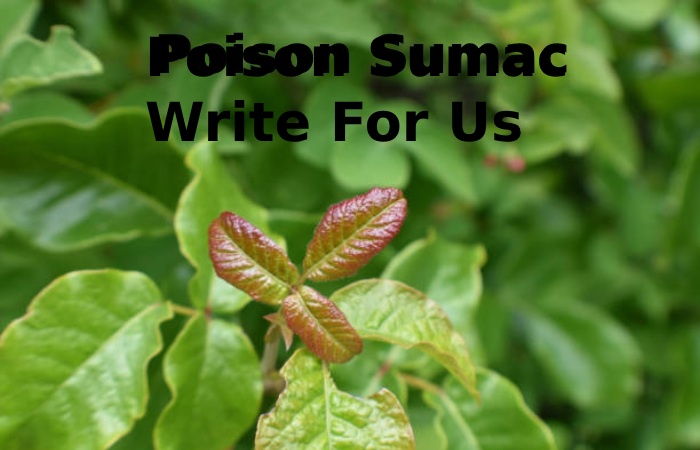
Poison Sumac Write For Us
Poison Sumac Write For Us – Pro Health Web is also passionate about providing our readers with the best content on men’s and women’s health. In addition, on this Pro Health Web website, you will also find the top diets endorsed by nutritionists to look Healthy and Beautiful.
Pro Health Web has a team of content writers who are obsessive about writing articles about Health, Beauty, Fitness, Diet, and more. Our team is dedicated to providing the best informative article to our readers. You can mail us at contact@prohealthweb.com
Poison sumac (Toxicodendron vernix) is a highly allergenic plant found in wetland areas of North America. It’s characterized by its smooth-edged, pointed leaflets arranged in pairs, typically with one leaflet at the tip. When the plant is injured or damaged, it releases urushiol oil, which causes severe allergic reactions upon contact with the skin, leading to intense itching, redness, blisters, and inflammation.
Inhaling smoke from burning poison sumac can even result in respiratory distress. Identifying and avoiding this plant and promptly washing affected skin and clothing is crucial to prevent the uncomfortable and sometimes severe allergic reactions it can trigger.
What are the Signs of Poison Sumac Rash?
A poison sumac rash typically manifests as symptoms upon contact with the plant’s urushiol oil. Initial signs include intense itching, redness, and inflammation of the affected area. Soon after, small, fluid-filled blisters may develop, merging and spreading if left untreated. The rash evolves over several days, with the blisters oozing and crusting as they heal.
The inflammation can cause severe discomfort, pain, and even fever. Scratching the affected area can lead to potential infection. It’s essential to seek medical attention if the rash is widespread, causing severe symptoms, or affecting sensitive areas like the face, genitals, or eyes.
How to Identify Poison Sumac?
Identifying poison sumac involves paying attention to its distinct characteristics. Poison sumac is a shrub or a small tree that grows in wetland areas.
Here’s How to Identify It:
- Leaf Arrangement: Poison sumac leaves are usually in pairs, with a single leaflet at the end of the stem. Each leaf typically has 7 to 13 leaflets, with one leaflet at the tip. The arrangement resembles a feather.
- Leaf Shape: The leaflets are elongated and taper to a point with smooth edges. They are often glossy in appearance.
- Leaf Color: The leaves are typically a vibrant green during the warmer months and can turn shades of orange, red, or yellow in the fall.
- The stems and branches of poison sumac may have a reddish hue and are regularly covered with tiny, hair-like structures.
- Berries: Poison sumac produces clusters of white or grayish berries that hang down from the stems. These berries can persist through the fall and winter months.
- Habitat: Poison sumac commonly originates in swampy, wetland areas. It thrives in locations with standing water and high humidity.
- Growth Form: It can grow as a shrub or small tree, reaching 20 feet. The plant’s growth habit can vary, ranging from upright to more spreading.
Remember that poison sumac contains urushiol oil, the same irritation in poison ivy and oak. To avoid contact with the plant, it is recommended to wear caring clothing, gloves, and closed shoes in areas where poison sumac might be present.
If you suspect you’ve encountered poison sumac and are concerned about potential exposure, wash the affected area with soap and water as soon as possible to minimize the risk of a rash developing.
How to Update Your Articles?
Emails addressed to contact@prohealthweb.com are the quickest way to reach us.
Why Write for Pro Health Web – Poison Sumac Write For Us
 Writing for Pro Health Web can expose your website to customers looking for a Poison Sumac.
Writing for Pro Health Web can expose your website to customers looking for a Poison Sumac.- Pro Health Web presence is on Social media, and they will share your article with the Poison Sumac-related audience.
- You can reach out to Poison Sumac enthusiasts.
Search Terms Related to Poison Sumac Write For Us
Toxicodendron vernix
Dioecious shrubs
Anacardiaceae
Pinnately compound
Sapindales
Poison oak
Iranian sumac
Urushiol
A young branch of staghorn sumac
Winged sumac leaves and flowers
What does poison ivy look like
Full-grown poison sumac tree
Poison ivy leaves
How long does poison sumac last
Poison ivy rash pictures
Poison ivy rash stages
Swamp-sumach
Rhus vernix
Pulmonary edema
Poison sumac rash pictures Mayo clinic
How to get rid of poison sumac rash overnight
Search Terms for Poison Sumac Write For Us
Poison Sumac Write For Us
Poison Sumac Guest Post
Contribute to Poison Sumac
Poison Sumac Submit Post
Poison Sumac to submit an article
Become a guest blogger Poison Sumac
Poison Sumac writers wanted
Poison Sumac, suggest a post
Guest author Poison Sumac
Poison Sumac Contribute
Guest Post Poison Sumac
Article Guidelines on Pro Health Web – Poison Sumac Write for Us
- Pro Health Web welcomes fresh and unique content related to Poison Sumac.
- Pro Health Web allows at least 500+ words related to Poison Sumac.
- The editorial team of Pro Health Web does not encourage promotional content related to Poison Sumac.
- For publishing an article at Pro Health Web, please email us at contact@prohealthweb.com
- Pro Health Web allows articles related to Health, Diet, Diseases, Technology, Products, etc.
Related Pages –
Pumpkin Seeds Write For Us
Meat Tenderizer write for us
Buckwheat Write for Us
Black seed oil Write For Us
CBD products Write For Us
Medical Tape write for us
